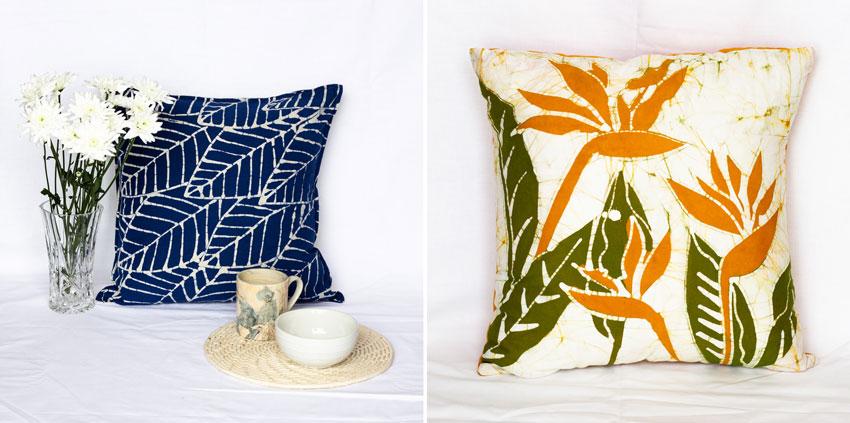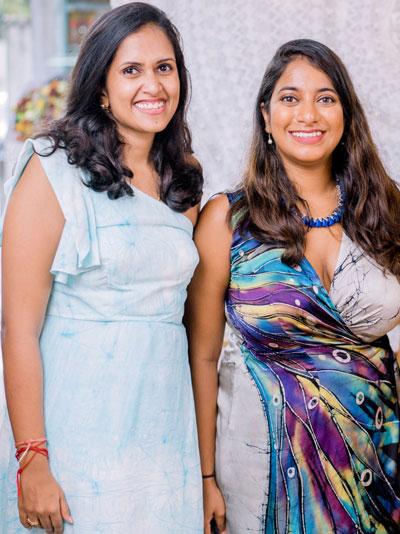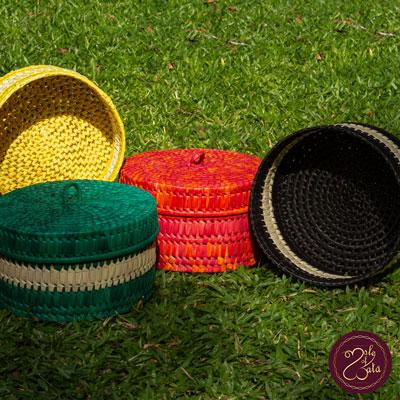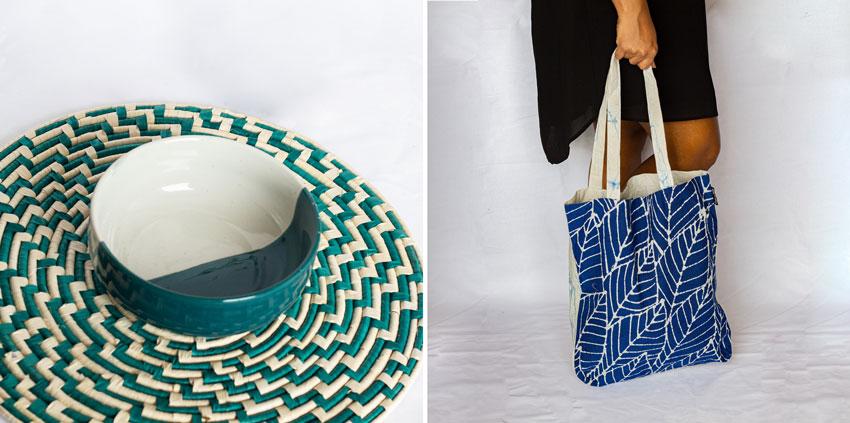14 Aug 2021 - {{hitsCtrl.values.hits}}

 On this week’s edition of ‘The Founder’ we feature two friends with a passion for Sri Lankan handicrafts; Heshani and Nilusha. Heshani Bogollagama, Former Chairperson of the National Crafts Council, Sri Lanka, Managing Directress of JB Lands (PVT) LTD, is an alumna of Sancta Sophia College, University of Sydney, Australia, and Ladies College, Colombo. Nilusha Shivaraj, armed with a Bachelor of Commerce in Accounting and Finance from the prestigious University of New South Wales (UNSW), Australia, is also an alumna of Stafford International School, Colombo. She is a popular radio personality hosting a prime time show on one of Sri Lanka’s leading Radio Networks. The duo launched their brand, “Isle of Rataa” during the first lockdown in 2020. Isle of Rataa, which loosely translates to, island of patterns, is a contemporary brand selling traditional Sri Lankan handicrafts created with a twist to suit modern trends.
On this week’s edition of ‘The Founder’ we feature two friends with a passion for Sri Lankan handicrafts; Heshani and Nilusha. Heshani Bogollagama, Former Chairperson of the National Crafts Council, Sri Lanka, Managing Directress of JB Lands (PVT) LTD, is an alumna of Sancta Sophia College, University of Sydney, Australia, and Ladies College, Colombo. Nilusha Shivaraj, armed with a Bachelor of Commerce in Accounting and Finance from the prestigious University of New South Wales (UNSW), Australia, is also an alumna of Stafford International School, Colombo. She is a popular radio personality hosting a prime time show on one of Sri Lanka’s leading Radio Networks. The duo launched their brand, “Isle of Rataa” during the first lockdown in 2020. Isle of Rataa, which loosely translates to, island of patterns, is a contemporary brand selling traditional Sri Lankan handicrafts created with a twist to suit modern trends.
 In your own words, what is Isle of Rataa? Isle of Rataa is a company founded by two friends, Heshani Bogollagama and Nilusha Shivaraj. The sole purpose is to engage with rural artisans to promote traditional Sri Lanka handicrafts, whilst bringing a modern twist to make it more useful to the needs of the modern consumer.
In your own words, what is Isle of Rataa? Isle of Rataa is a company founded by two friends, Heshani Bogollagama and Nilusha Shivaraj. The sole purpose is to engage with rural artisans to promote traditional Sri Lanka handicrafts, whilst bringing a modern twist to make it more useful to the needs of the modern consumer.
What inspired you? Sri Lanka has diverse, historical and a rich variety of handicrafts. There are over 60,000 artisans around the country who engage in this industry and during the pandemic, we witnessed many of them lose their jobs, with the fall of the tourism industry. Isle of Rataa was formed primarily to provide them with better market access.
What was the journey like, starting from scratch and building the business up to where it is right now? We started during the first lockdown in 2020. Starting a business in the middle of a pandemic has not been an easy journey. Most of our artisans do not have access to mobile phones and technology, therefore correspondence was a very tedious task. Whilst, it started as mainly an online store, we are grateful to our retail partners who approached us and gave us space in three prime locations in Colombo. We also had the opportunity to do some vastly different events including pop-up events with live demonstrations, which helped the consumer learn more about the craft, to training programs that helped over 150 women gain new skillsets, which will undoubtedly help them find new avenues to make money. As we are nearing our first birthday, despite being a company born in the middle of a pandemic, we are happy about our achievements.
 What were some of the hardships you faced as Entrepreneurs, and what was the toughest one yet? Correspondence and logistics during the lockdown proved to be quite a gruelling task. As a start-up, we have to do everything alone and a task that seemed to be quite difficult was making consumers understand the difference between hand-made products and industrial products.
What were some of the hardships you faced as Entrepreneurs, and what was the toughest one yet? Correspondence and logistics during the lockdown proved to be quite a gruelling task. As a start-up, we have to do everything alone and a task that seemed to be quite difficult was making consumers understand the difference between hand-made products and industrial products.
Being Entrepreneurs what was it like facing the global pandemic? How did it affect the business? Like we mentioned earlier, our business was our brainchild during a pandemic so when we started, we knew the limitations that we faced. We had the pandemic in mind when we came up with ideas and therefore, our solutions were quick. The handicrafts industry heavily relied on tourists and mainly produced souvenir items. Converting to utility items and marketing to the local market became a necessity rather than an idea. These were relatively new frontiers that we had to embark on and it was a trial-and-error mode. It was challenging but rewarding when we got small stories of success.
Explain a few marketing strategies you have implemented, and what makes them successful? We believe the crafts we produce are more than a product. It has a story, and we want to highlight that story. Not only are we sharing the ancient techniques going into making our Isle of Rataa products, but we want our consumers to know the people who make it. From sharing fun facts of the craft techniques, showing artisanal videos and their stories, to doing live demonstrations at events, we try to bring the consumer and artisan closer together.

What motivates you to do what you do on daily basis? Our main motivation is to make a difference for Sri Lankan handicrafts locally and globally and provide our artisans with an opportunity to showcase their flairs.
What separates Isle of Rataa from its competitors? Firstly, our operation model is one where the artisan is the majority beneficiary of the sales done through Isle of Rataa. We ensure that 60% to 70 % of the retail value goes to the artisan. Since the general opinion that has been created for Sri Lankan handicrafts is that it is expensive compared to rest of the region, with our operation model we have ensured the consumer too gets products at affordable prices.
What is your definition for the word “success”? For us, success is to be the go-to-brand locally for all things handicrafts, as well as being able to successfully market high quality handicrafts globally.
07 Jan 2025 4 hours ago
07 Jan 2025 4 hours ago
07 Jan 2025 5 hours ago
07 Jan 2025 8 hours ago
07 Jan 2025 8 hours ago